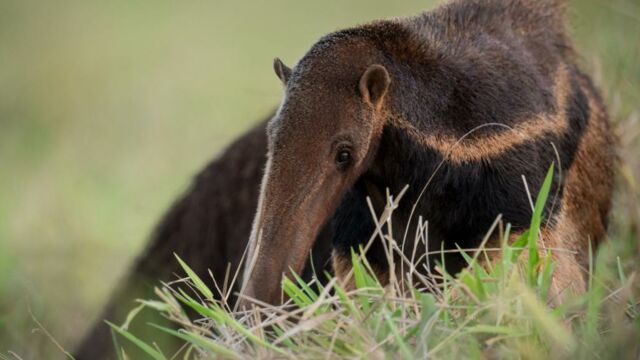Giant anteaters are far more dangerous than you might think

Fatal anteater attacks occurred recently. Experts say it's a direct consequence of habitat shrinkage, which forces more and more encounters with Man.
Beware the anteaters. While these animals may not exhibit any obvious outward ferocity, like the cassowary for example, or the honey badger, or any such animal more dangerous than they appear, they are nonetheless formidable defenders aginst people who would dare to invade their territory and force a confrontation with them. A report published in 2014 revealed the details of two attacks in the space of two years in northwestern Brazil. The two men who were targeted in 2010 and 2012 both lost their lives in the altercations.
Discover our latest podcast
Anteaters, or giant anteaters (Myrmecophaga tridactyla) are not generally considered aggressive towards humans and tend to avoid them as much as possible. These hairy animals with a very long nose are toothless and also have very poor eyesight and hearing. They are victim of the reduction of their habitat caused by human activities. This species is classified as 'vulnerable' on the list of the International Union for the Conservation of Nature (UCIN).
More under this adMore under this adRisks of confrontation increased by deforestation
It is thus because of man that there are more and more encounters with anteaters. By increasing the areas of deforestation, and by venturing more and more into their natural spaces, they increase dramatically the risks of animal attacks. While these giants are not so belligerent, they are easily frightened.
These animals, about two meters long and generally weighing more than 30 kilograms, tend to defend themselves by using their four long claws placed on each of their two front legs. The size of small knives, these claws are mainly used for digging in anthills. However, when an anteater feels threatened, it does not hesitate to use these large tools to ward off its predator.
More under this adMore under this adThe two cases of fatal attacks documented by scientists were the subject of a publication in the online journal Wilderness and Environmental Medicine. According to the authors of the study, the two victims, two hunters aged 47 and 75 respectively, died of their wounds inflicted by anteater claws in the femoral arteries. Vidal Haddad, lead author of the study, said in an AFP statement:
The injuries inflicted were very serious and it is not known whether these defensive behaviours were acquired recently by these animals.More under this adMore under this ad
One thing is for sure, however, the attack was in both cases instigated by Man. In fact, the testimonies indicate that the animals defended themselves after having been injured or trapped.
A call to preserve the natural habitat of anteaters
However, the authors insisted that these were particularly rare and unusual behaviours. They specified the importance of monitoring them, but above all of preventing these attacks by leaving enough natural space in the environment for the animals. It is therefore a warning and not a call for malice towards the anteater.
More under this adMore under this adFlavia Miranda, anteater expert, hopes for her part that the message has been understood and that it will not be misinterpreted. She explains to AFP:
We already have a lot of problems with this species because a number of people think they bring bad luck and they kill the animal on purpose. But I also understand the importance of this article because I myself recently had an incident with an anteater and almost died from it.More under this ad